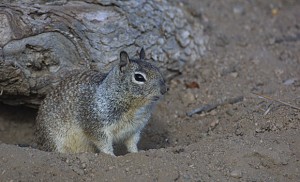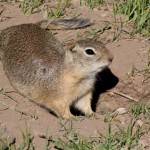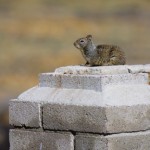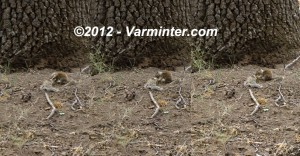Family, Description and Size:
The Ground Squirrel is a member of the Squirrel family of rodents or the Sciuridae as they are called in Latin. When speaking about Ground Squirrels, one usually refers to the most wide-spread subspecies, like the California Ground Squirrel, Richardson Ground Squirrel and the 13-lined Ground Squirrel. Some of the larger animals in the “Ground Squirrel” family are better known as marmots or prairie dogs and the smaller ones are widely known as chipmunks.
Ground Squirrels usually have a light gray or yellowish-gray fur color, they have a rather pear-shaped body and small pointy ears. They usually have smaller tails than tree Squirrels.
Ground Squirrels weigh on average 8-14 ounces and are 7 to 8 inches long. There are many different species all over the world which vary slightly in size and weight as well as in shape.
Range and Habits:
Ground Squirrels are very prolific. They easily adapt to suburban areas, the tundra, forests and deserts. Ground Squirrels live in colonies, burrows can extend up to 15 feet, often having many
different entrances. Their main diet consists of nuts, fruit and seeds. However, Ground Squirrels are cannibalistic, so they will readily eat the dead of their own kind (see graphic pictures below).
Ground Squirrels, like most Squirrels, like to gather food in storages, which can usually be found in their burrows or in tree crevices. Males need to gather less food than females, because females have to eat more to produce milk for their young and to feed the youngsters once they are ready to ingest solid food.
General Information:
What makes the Ground Squirrel despised among many farmers is that they love to eat crops just as they are growing, causing great damage, especially to organic farms. Farm equipment can be lost or sink in their burrows and fruit or nut-bearing trees can topple due to the loosening of the soil the burrowing creates. Ground Squirrels cause millions of dollars in damage every year though-out North America.
Ground Squirrels are very social and live usually in large groups called colonies. On farms where the colonies are causing damage, hunting the Ground Squirrels is often allowed if the hunter has the appropriate license and local regulations permit it.
Some types of Ground Squirrel, depending on the area they live, will go into hibernation during winter time that can last up to 5-6 weeks. During that time the Squirrel will wake up only once a week for a short while. In hot climates though, like the Mohave Desert where the Mohave Squirrel lives, the animals will estivate. Estivation happens when an animal sleeps during summer, avoiding a very hot climate like that of a desert.
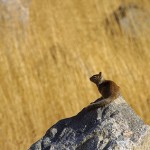 Predators, Mortality and Lifespan:
Predators, Mortality and Lifespan:
Ground Squirrels depend on numbers for their survival as a species. They have litters of an average of 8 young and breed very quickly. Like most small rodents, they have a plethora of predators, like the fox, bobcats, coyotes, owls and generally any predator large enough to catch them.
Humans are also a great danger to Ground Squirrels, as farmers in particular strive to get rid of them in their farmlands. Still the Ground Squirrels enjoy a healthy and steady population and are on the least concern list of endangered animals.
Ground Squirrels live approximately 3 to 4 years on average.
Ground Squirrels are known to be cannibalistic. This means that they will eat their own kind. They have been witnessed by many eating their dead. Oftentimes, they will start with the brains, eyes, or intestines and work their way to the stomach and other organs. I took these pictures in Central California after a short hunt. This Ground Squirrel came out from its burrow and began to devour the dead one in front of this Oak Tree.

